Three years after it was first released in Japan, Yakuza 5 has finally made its way to Western audiences, exclusively on the PlayStation 3. Once again, players take on the role of ex-Yakuza Kazuma Kiryu, who attempted to leave the gangster life once and for all in the third game. We’re not going to tell you here how well that’s going for him – we’d be giving away too much. What we are going to tell you, though, is whether or not Yakuza 5 is worth checking out for yourself.
Story
After a tenuous peace, two rival Yakuza clans are once again preparing to face off against one another for control of the criminal underworld. Protagonist Kazuma Kiryu is trying to make an honest living under a new identity as a taxi driver when the “chairman” of his former clan disappears without a trace. Kiryu is the last person to ahve seen the mysterious Yakuza boss alive (as a passenger in his cab, no less), and ends up being drawn into the whole affair. It doesn’t take long for the ex-Yakuza’s new identity to fall apart – too many people remember him as a gangster. The story doesn’t just revolve around Kiryu, though; overall, the game is divided into five episodes, with five playable characters – some of whom you might already be familiar with – and various plot threads that all come together in the end.Throughout the story, which is heavily text-based, players will be treated to several plot twists and turns. The menu shows you your overall progress, so you always know how much more there is to go. I’m not going to tell you here just how many hours the game takes to play, just that it’s going to talk you a lot of work just to get past ten percent.
Welcome to Japan
There isn’t really all that much that’s new about the urban environment in Yakuza 5 when you compare it to previous games in the series. The first episode is set in Fukokua, a typical Japanese metropolis with lots of traffic and colorful neon signs. Later, you go to Tokyo, where everything is bigger and more impressive. Of course, the episodes themselves all take place in fictional areas of the cities in question. Kamurocho is the setting of the second episode, based on the red-light district of Kabukicho in Tokyo. In contrast to Yakuza 4, the fifth installment in the series stays “grounded” for the most part. The previous game had you going all over the rooftops and all, a feature they’ve more or less done away with in this one – to their credit.There are lots of people on the streets, and everything and everyone sort of sticks together. If you try to rush through the streets, you’re bound to run into someone – sometimes even knocking them over. There are winding alleyways, small urban parks, Shinto shrines, etc. all over the place, but they’re often inconspicuously tucked away, which gives you a reason to slow down when moving through the city. There are lots of interesting things to see and explore, but you’re going to miss most of them if you just play the main storyline. If you’ve ever had the chance to visit a large Japanese city, you’re going to be amazed by the authenticity and attention to detail in each of the locations in Yakuza 5. It’s easy to get swept up by the atmosphere, and this is one place where the developers have done an amazing job. The size of the playable area is just right – at the beginning you feel like you’re lost in an unfamiliar world, but towards the end it’s almost like home. Of course, you’re always going to feel like you might have missed something somewhere. And although the main character is a taxi driver himself, you can also hail a cab at certain spots, which saves you from having to hoof it everywhere.
In any event, it’s extremely difficult to actually lose sight of the main mission. There’s a log book in the menu of course, but the storyline is so linear that you always know what you have to do next. The world of Yakuza 5 is made even more interesting by the question marks that pop up on the map, along with speech bubbles from nearby passers-by. This is where the game’s countless side missions begin, many of which end up being extremely complex, even convoluted. There’s this one woman whose child has been kidnapped, and she asks you to catch the kidnapper. This mission requires you to win a car race before the whole thing ends with you in a brawl with the sick bastard himself.
And if you’ve ever talked trash about taxi drivers, you’re soon going to find out just how stressful that job can be. Drive up slowly, stop at stop signs, wait at traffic lights, sometimes for several minutes on end, all while trying to keep your passenger happy by choosing the right answers in the dialogue – it’s enough to wear you down. And on top of all that, you have to drive on the left side of the road, which is a complete reversal from people in most countries are used to. GTA fans are going to have a pretty hard time at first. Even minor traffic violations will cost you points; a more serious one, and it’s right back to the beginning. And all the while, the clock is ticking.
There are lots of different buildings you can enter, including nightclubs, arcades, restaurants, supermarkets, and even large retail outlets (called “Don Quijote”, an actual store chain in Japan), though it won’t take you long to realize that some of these temples of consumerism are more accessible than others. In some of these buildings you’re really free to move about, but in others all you can do is sit there at a table or something. The ubiquitous vending machines that you see around Tokyo, where you can get a cold drink even in the heat of August, are back, but once again, they don’t actually do anything. I think Shenmue 2 (also from Sega) did a better job with the machines a decade and a half ago.
Domo arigato, Mr. Roboto
Voiceovers in Yakuza 5 are all in Japanese, with very loosely translated English subtitles, which can result in some rather perplexing – even unintentionally funny – turns of phrase. “Sumimasen” can mean pretty much anything in the game (in Japanese it’s really nothing more than a polite “excuse me”), and they end up translating it all kinds of ways, which fans of Japanese language and culture will no doubt find amusing. And if you can read a bit of kana, the various signs and placards can be pretty interesting.
Character study
The five protagonists are distinguished by various active and passive combat skills. Saejima, number two in the game, has different skills than Kiryu to start with, and from there develops his own unique combat style. A classic experience-points-based system allow you to develop skills in hand-to-hand combat, knives, firearms, nunchakus, as well as various defensive techniques. You get experience points by winning battles, of course, and Yakuza 5 gives you more than enough opportunities to get them, as you’re constantly getting jumped by gangs out on the street who just don’t like the way you look. You get into street fights all too often, actually, which can sometimes hold you up when trying to complete your mission objectives; though, on the other hand, it’s unavoidable if you want to level up. The fights, which are almost always watched by enthusiastic onlookers, are graceful and brutal all at the same time. The environment is there for you to use in various ways – who hasn’t dreamed of beating their enemies over the head with a motorcycle, then jumping on top of them after they've kissed the pavement?You don’t just get experience points for winning fights, of course – there’s also cold, hard cash, along with countless items to collect or trade in for more money at one of the many shops found throughout the game. There are also various contests and the like you’ll run into out on the streets, which are a lot more interesting than the countless street fights, since they often result in side missions and aren’t random and repetitive. There are also weapon shops where you can have weapons repaired and even customize them. Overall, the latest installment in the Yakuza series focuses a lot less on firearms than the last one. Enemy AI still appears to be at the “schoolyard” level, unfortunately. Enemies always seem to wait until it’s their turn to get their asses handed to them. And certain finishing moves are so intimidating that the rest of the enemies hit the ground all at once, apparently out of pure terror. The combat system offers lots of room for development, though this usually takes the form of new finishing moves. The movement of the characters seems to be a bit too hectic overall, though the controls work really well with the environment.
Action please!
The thing that really makes Yakuza 5 stand out are the countless opportunities it offers to interact with the in-game environment. Side missions and mini-games are so well integrated into the main game that you hardly notice you’ve started them – in fact, hardly any other game does such a good job of blending together such a wide rage of different activities. In addition to the “games within a game” you could play in the previous games as well, such as darts or “UFO-Catcher” (a claw machine with some really nice physics effects), Yakuza 5 also features some pretty impressive video games that you can play in various Sega arcades. These alone were worth doing the review for. Finally, there are all kinds of typical Japanese pastimes to participate in, like playing Pachinko, Taiko drumming, or taking pictures in a photo booth.Sometime you really get the impression that Yakuza 5 is trying hard to be an advertisement for Japanese cuisine. In one mission, instead of a taxi you’re supposed to take a food cart from point A to point B, hopefully in one piece; another one has you helping an injured cook make ramen – a chaotic little mini-game with a timer. Kiryu can make a name for himself as a restaurant critic of sorts, trying out what feels like just about everything Japanese cuisine has to offer. It’s a lot more than sushi, too – you learn something new every day.
The really cool thing about exploring the world of Yakuza 5 is that it’s not all just made up. Whether you’re visiting a restaurant or an arcade, the developers have placed a heavy emphasis on authenticity. The sashimi is just as real as the companies that appear in the game, as are the stock phrases you hear in the supermarkets.
They’ve really done a great job of tying together all the side quests with the main storyline, along with over 30 different mini-games. You run into a lot of familiar faces – one of them wants you to take pictures for him. Yakuza fans might be thinking that there’s nothing new to see here, but they’d be wrong. More than just classic camera work, there are also some funny stories that unfold only after you complete various quick-time events behind the camera. And speaking of movies – players get the chance to step in front of the camera themselves, filling a role in a Yakuza B-movie about zombies.
Other tasks like picking trash up off the streets can hardly be called mini-games at all – pretty much all you’re doing is awkwardly clicking on various shiny objects. Fishing, on the other hand, is a lot more fun. It seems that with Yakuza 5, Sega took everything they learned from the Dreamcast era and worked it into the game. And sometimes things are a lot different, too: a would-be university student is getting nervous before his entrance exams – he really has been studying hard, but he seems to have forgotten the answers in his panic. The protagonist is happy to offer his help, which means he (i.e., the player) has to know the answers to the test, which cover various fields including history, literature, and even math. With a few notable exceptions, the mini-games are overall extremely diverse and really are a lot of fun.
Be proactive
So what else is there to do? Well, first of all, you’ll have to do your character’s job, which means driving a taxi, and also customizing it. This occupation tunes out to be almost as busy as an actual Japanese workday – passengers want you to drive them here and there, and when you’re off your co-workers are going to want you to go and get a beer with them. And all the while you’d better not neglect your girlfriend, either. And sooner or later people are going to start figuring out who the taxi driver really is, inevitably leading to high-speed chases through the streets.Then there’s also your boss, who wants you to take care of this or that additional errand, and suddenly it’s dark outside and you still have so much left to do. At the beginning of Yakuza 5, you almost feel like you’re being exploited, but then again, everyone knows that the Japanese work longer hours than we do in the West. After a while, though, you’ll find that you’ll have a lot more time to explore the city at your leisure. It’s all about efficiency and planning ahead – you quickly learn that when you go to the supermarket, you shouldn’t just buy food, but also use the visit to transfer some funds on the ATM. An orphanage needs financial support after all – and you probably won’t know what I’m talking about if you haven’t played the previous games in the series. While you don’t necessarily have to have played the other games, it’s nevertheless a good idea to do so, since they often reference past events and characters in the course of the storyline. If you want to improve your driving skills a bit, the city streets are yours to explore and hone your craft, with different possibilities depending on what time of day it is, since not all bars and other establishments are open round the clock. And when you get home, before you get a chance to rest there’s a newspaper salesman at your door trying to interest you in buying a subscription.
It’s not until you play the game for a few hours though that you realize just how deep Yakuza 5 really is – there doesn’t seem to have been any limits whatsoever on the developers’ creativity. The player character also gets a cell phone, which allows him to receive everything from useful telephone calls to obnoxious ads via text. The notebook feature on the phone allows you to go back and review some tips if you ever get overwhelmed (it happens), much like the memo feature in Yakuza 4, but less conspicuous. You should also make sure to save your game every now and then. While Yakuza 5 is designed with casual gamers in mind as well, and you won’t have to repeat whole missions if you botch them right before the end, it’s still a good idea to find a phone booth (save point) every now and then, as some of the missions can get pretty long, especially the ones related to the main storyline.
Graphics, etc. The reason Yakuza 5 has been released as a PS3 game is simply because that’s the console it came out on in Japan back in 2012. As you might expect, this decision means that the graphics don’t quite hold up in comparison to more recent games, and you’ll find detailed faces (especially in the cut scenes) side-by-side with washed out, last-gen textures, along with some pretty bad anti-aliasing. Supposedly they developed an all-new new graphics engine for Yakuza 5, but it’s hard to see where it’s any different from the one they used in the previous two games. Unlike its predecessors, this game lets you completely skip cut scenes if you want to, which is a pretty nice feature given game’s heavy emphasis on dialogue, where it never takes more than a few lines to now what’s going on.







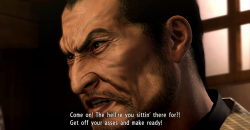
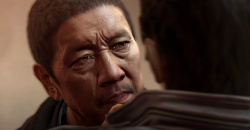
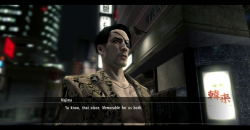
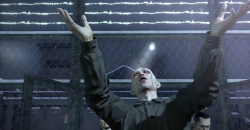
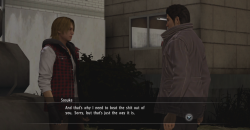

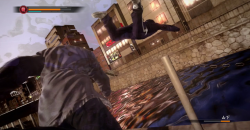
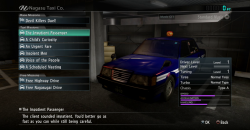
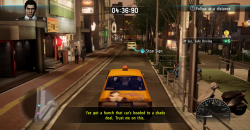
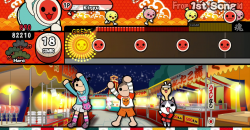
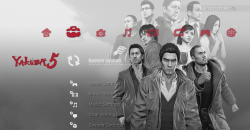
аываыва
محتاج نعرفت اضفت الاصدقاء
wcds